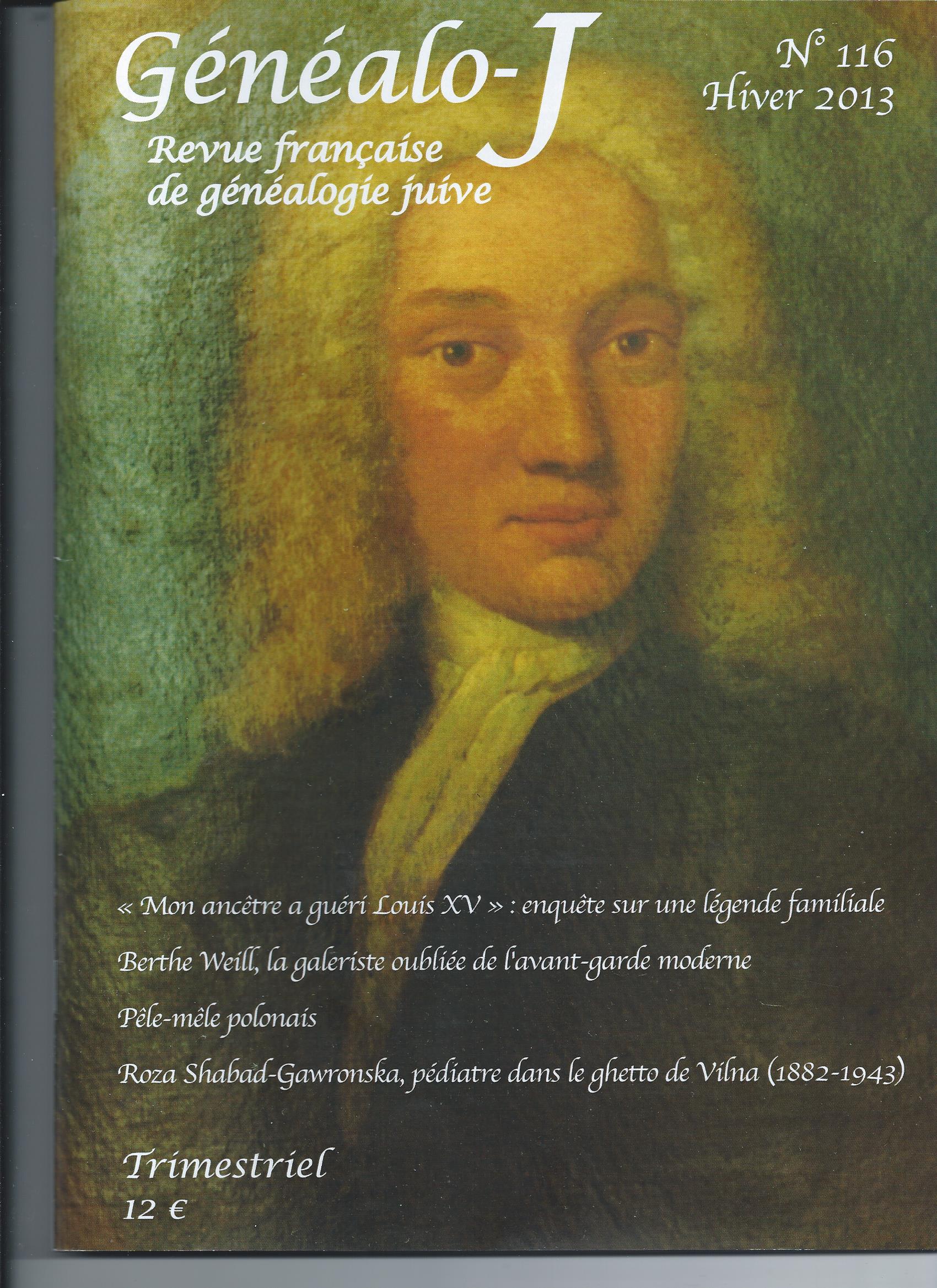
ABSTRACTS of ISSUE #116
Pierre-André Meyer
'My ancestor cured king Louis XV' : investigating a family legend
As the author read in various books, articles or letters a tradition
was firmly rooted in different families with no link between
them. It attributed a role in the healing of king Louis XV
when he became seriously ill in 1744 in the city to an ancestor,
a physician in the Jewish community of Metz in the 18th century.
What is the origin of this flattering family tradition? On
what proven facts was it founded? What do the historians
say ? Reviewing everything that has been written on the matter
P.-A. Meyer aims at answering these questions and reaches
disturbing conclusions; could this tradition be just a myth ?
Marianne le Morvan
Berthe Weill, a forgotten “galeriste”
Berthe Weill (1865 - 1951) remains unknown although she was
the first woman to open an art gallery in Montmartre in 1901.
Paris was then the centre of an unprecedented artistic revolution
and Berthe Weill was impressively clear-sighted enough to
have the pictures of beginners recognized. She was the first to
sell Picasso's works in Paris and discovered the Fauves before
the Autumn Salon of 1905. She promoted cubism from its very
beginning. Throughout her 35-year career Berthe Weill was an
influential dealer in spite of the misogynic and anti-Semitic
climate of the period.
Daniel Vangheluwe
A Polish maze
How to find one's way in the maze of Polish archives ? School files,
notarial rolls, documents in Warshaw… The author gives useful
addresses and directions for use.
Muriel Chochois
Roza Shabad-Gawronska, pédiatre,Vilna 1882 - 1943
Dr. Roza Shabad-Gawronska, born in Vilna in 1882, studied
medicine at the University of Freiburg im Breisgau, where she
specialised in paediatrics. This concern with working on the
children's living conditions, their food and their hygiene were to
guide all of her future actions. In the “Health Department" created
by the Jewish physicians at the beginning of the Vilna ghetto
in September 1941, Dr. Shabad-Gawronska was in charge of
the child consultation center for children up to seven years, the
day care center, the “Drop of milk” and the orphanage. This one,
installed in the Elyashberg prayer house, at 1 Hekdesh Street,
just beside the hospital, was inaugurated on 8 March 1942. The
23th of September 1943, the Vilna Ghetto was liquitated, and,
regarding the eyewitnesses, Dr Shabad-Gawronska disappeared
with all the orphans and the educators of the orphanage